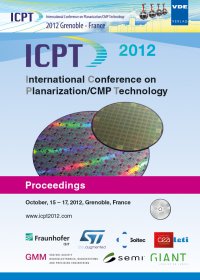Adsorption Mechanism of Benzotriazole on Copper Surface in CMP Based Slurries Containing Peroxide and Glycine
Konferenz: ICPT 2012 - International Conference on Planarization / CMP Technology
15.10.2012-17.10.2012 in Grenoble, France
Tagungsband: ICPT 2012
Seiten: 6Sprache: EnglischTyp: PDF
Persönliche VDE-Mitglieder erhalten auf diesen Artikel 10% Rabatt
Autoren:
Li, Jing; Lu, Xinchun; Ou, Junyu; Cheng, Jie (State Key Laboratory of Tribology, Tsinghua University, Beijing 100084, China)
Inhalt:
During the process of chemical mechanical planarization (CMP) of copper interconnection of ultra large scale integration (ULSI), benzotriazole (BTA) is the most commonly used inhibitor in the slurry. In this paper, the adsorption mechanisms of BTA were studied by weight loss measurements. The inhibition efficiency increases with an increase in the concentration of BTA. The adsorption of BTA was found to occur on the copper surface according to the Temkin isotherm in the acidic slurries and Langmuir isotherm in the alkaline slurries. The values of Gibbs energy of adsorption suggest the both physisorption and chemisorption of BTA on copper surface in both acidic and alkaline slurries. The results provide further insight into the material removal mechanism during CMP process. Keywords: CMP, Adsorption mechanism, BTA


